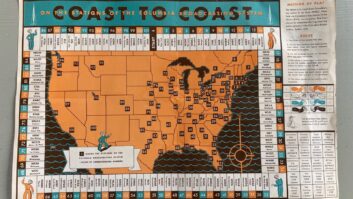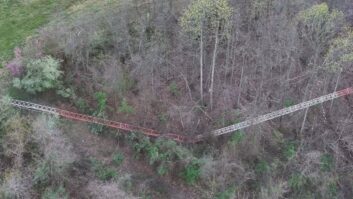John Battison: 1986 View of Radio Future
Nov 1, 2009 12:00 PM, by Erin Shipps, associate editor

In 1986 John Battison wrote an article called �Making History� in which he made predictions about the future of broadcast radio. Here are his predictions, followed by comments from Editor Chriss Scherer on the actual state of these topics now.
1986 � Cellular telephones are obviously going to play an increasingly large part in our lives and in the development of personal portable telephones. These phones have been available for years, and many engineers have had 2-meter rigs in their cars for some time. However, cellular radio will make phones far more efficient and attractive to the general public.
2009 � They’re not just phones anymore: They are media players, cameras, Internet browsers and broadcast receivers.
1986 � Stereo broadcasting: We’ve heard quad stereo and I, for one, have been unimpressed by it. Now we have stereo AM. That technology seems a little more impressive, but I can’t help wondering how far it will go in the future. Will it really do that much to boost sagging AM radio ratings?
2009 � We know that AM stereo never really took off. And except for a few market-leading stations, AM ratings continue to fall.
1986 � Subcarriers: SCAs are old hat by now. The only recent change is that the commission has now increased the number of channels that may be carried on an FM carrier. Similar control systems can be carried on AM. AM still cannot do as much as FM in the way of providing ancillary services on a carrier, but AM-SCA can certainly provide a means of increased revenue for an astute operator.
2009 � SCAs have changed little since then, although digital methods (including FM Extra) have given some stations new uses. Multicast capability on FM HD Radio is today’s modern equivalent to the 1980s SCA.
1986 � Radio control: Children are now playing with radio-controlled airplanes, and I recently saw an ad for a radio-controlled submarine. UHF propagation is so much better understood than it was 30 years ago, and is being used in ways undreamed of in 1950. Unfortunately, the mobile radio interests are dreaming of unused UHF channels for communication purposes. This is something that all UHF operators should watch closely.
2009 � Everyone wants a piece of the spectrum used by broadcasters. TV stations are fighting the white spaces and 2GHz encroachers, while terrestrial radio is struggling with low-power services.
1986 � Digital: The catchword today is digital, and everyone is climbing on the band-wagon. Digital techniques certainly offer freedom from noise and allow international compatibility. As the industry develops additional standards, further use of the technology will take place. Computers are almost commonplace today. We have passed the era when people saw the computer as a vade mecum, or a universal panacea, and purchased thousands in high hopes of gaining a third hand. However, as the wild enthusiasm levels off, computers are becoming more and more a part of our daily lives. Self-repairing and operating equipment and robots are also on the horizon.
2009 � Digital is still the catch word, but we know how to use it better. The enthusiasm over computers hasn’t really waned, but it has matured. No one can imagine life without the Internet today. Self-repairing equipment? In some ways, yes. Robots? Not yet.
And what are Battison’s thoughts on today’s industry? He writes, �In the field of transmission we have a number of dubious designs and devices including the unpopular IBOC. Dissident engineers are demanding the end of AM broadcasting, which has been considerably weakened by excessive interference due to laxity on the part of the FCC in enforcing non-radio sourced anti-interference rules (very foolish because with AM all you need for reception is headphones, a semiconductor a capacitor and a little wire. Other systems require more complicated receiving devices.)�
Here’s to the next 20, 40, 100 years.
Number of articles by John Battison
Total number of articles Battison has penned: 215. How much the broadcast community has learned from him: countless….
John Battison’s 1998 NAB Engineer of the Year Acceptance Speech
To know John is to know the history of our industry, and to hear him speak is an education in itself….
Radio Mag Online Podcast for November 2009
The Radio Mag Online podcast for November 2009: John Battison comments on the creation of the Society of Broadcast Engineers while accepting the SBE’s Lifetime Achievement Award in April 2006….










